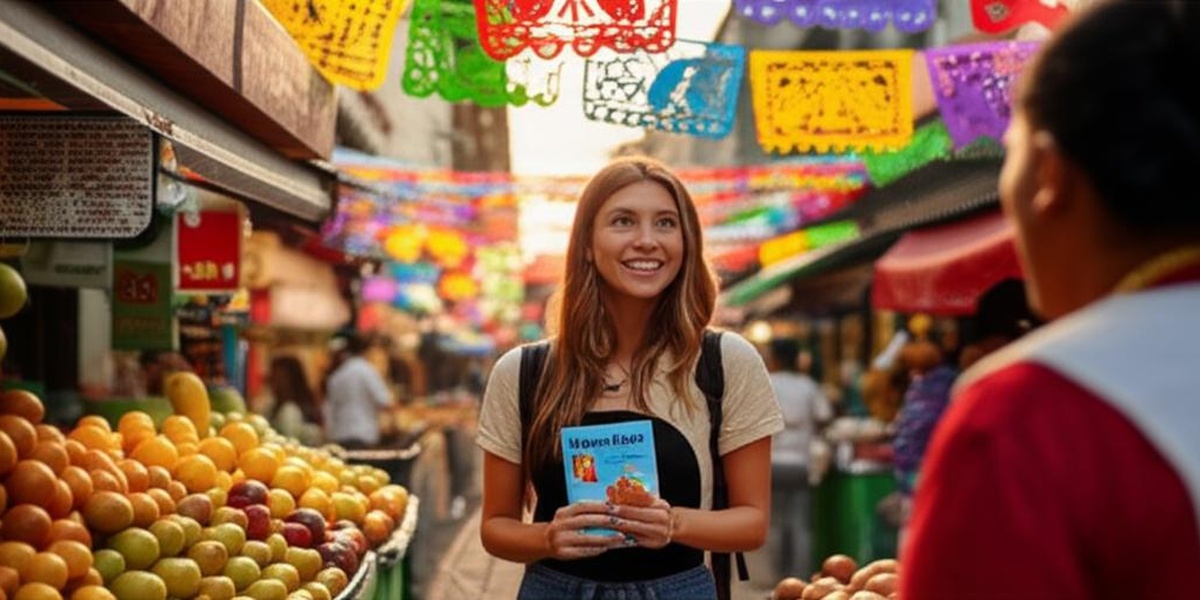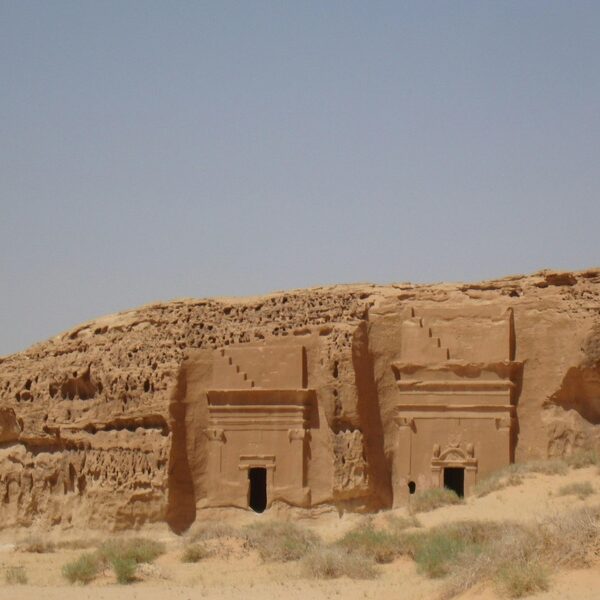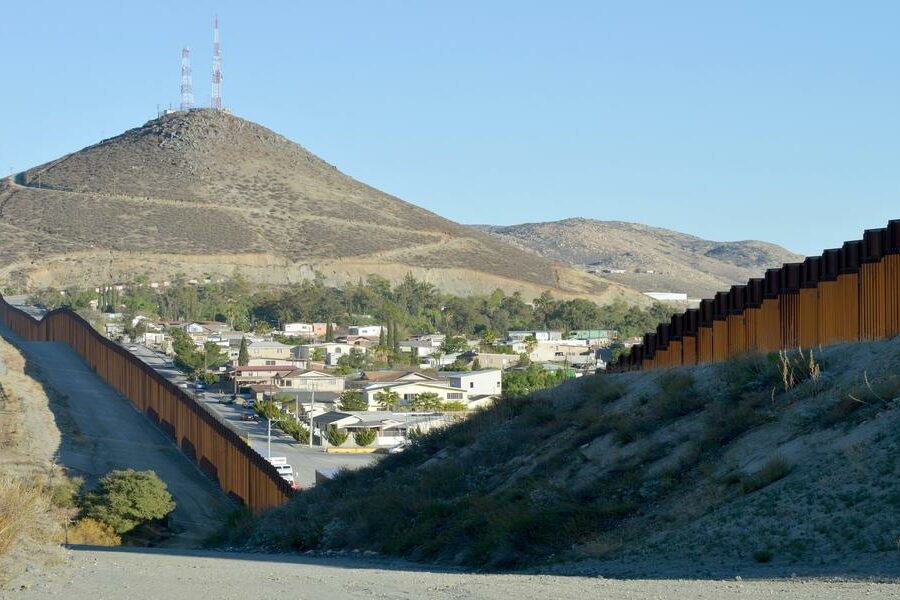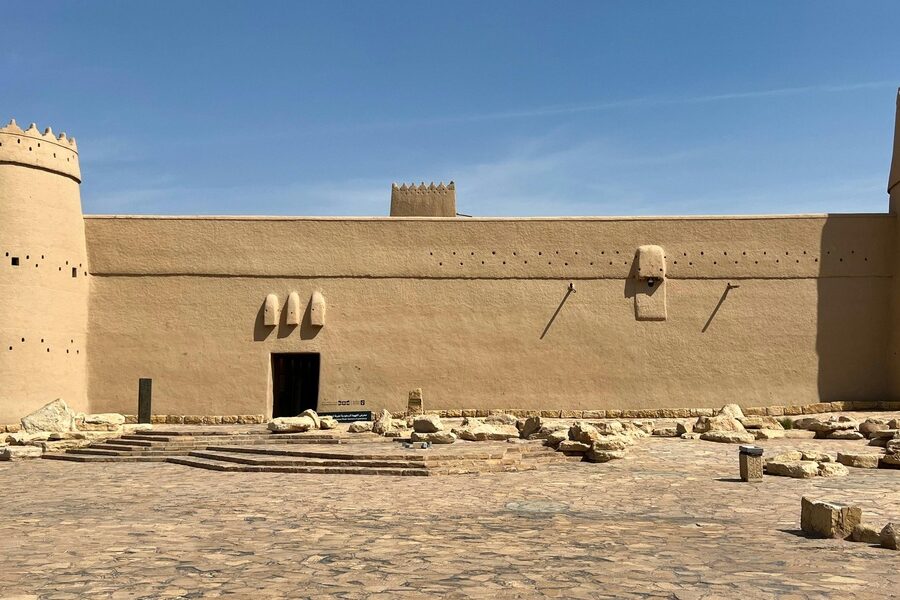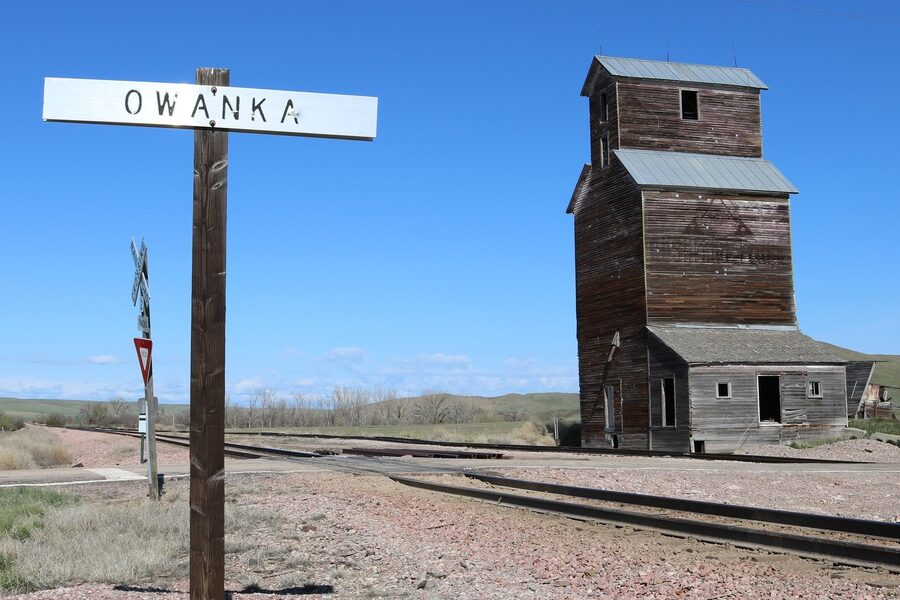Mexico’s neighborhoods, markets and coastal towns are full of small moments where a few local words make a visit smoother and more fun. Whether you’re haggling at a mercado, asking for directions, or ordering street food, a handful of phrases goes a long way.
There are 62 Useful Phrases for Tourists in Mexico, ranging from A la derecha to ¿Qué onda? For each entry you’ll find below the three-column layout organized with Pronunciation,English translation,Context/use to help you learn quickly and use them in real situations — you’ll find below.
How quickly can I pick up the most important phrases before a trip?
Focus first on greetings, numbers, ordering food, directions and polite phrases; practicing aloud for 10–15 minutes a day for a week will make the basics feel natural. Use the Pronunciation column and try short role-plays or voice recordings to build confidence — natives appreciate the effort even if pronunciation isn’t perfect.
Will these phrases work everywhere in Mexico or are there regional differences?
Most entries are standard and widely understood, but slang and some expressions vary by region; the Context/use column flags casual or local usage so you can match tone. When in doubt, stick to simple phrasing and friendly body language — people respond well to politeness and clarity.
Useful Phrases for Tourists in Mexico
| Spanish phrase | Pronunciation | English translation | Context/use |
|---|---|---|---|
| Hola | OH-lah | Hello | A universal greeting for any time of day. |
| Buenos días | BWEH-nohs DEE-ahs | Good morning | A polite greeting used only in the morning. |
| Buenas tardes | BWEH-nahs TAR-dehs | Good afternoon | A polite greeting used from noon until sundown. |
| Buenas noches | BWEH-nahs NOH-chehs | Good night | A greeting or farewell used after dark. |
| Adiós | ah-dee-OHS | Goodbye | When you are leaving for good. |
| Hasta luego | AHS-tah LWEH-go | See you later | A common and friendly way to say goodbye. |
| Por favor | por fah-VOR | Please | Use when making any kind of request. |
| Gracias | GRAH-see-ahs | Thank you | Use after receiving help, service, or an item. |
| De nada | deh NAH-dah | You’re welcome | The standard response after someone says “gracias”. |
| Con permiso | kohn per-MEE-soh | Excuse me (with your permission) | To pass someone or leave a conversation. |
| Disculpe | dees-KOOL-peh | Excuse me (to get attention) | To get someone’s attention. |
| Perdón | per-DOHN | Sorry / Pardon me | For a minor mistake, like bumping into someone. |
| Mucho gusto | MOO-choh GOOS-toh | Nice to meet you | When being introduced to someone for the first time. |
| ¿Cómo está? | KOH-moh es-TAH | How are you? (formal) | A polite way to ask how someone is doing. |
| ¿Cómo estás? | KOH-moh es-TAHS | How are you? (informal) | A casual way to ask how a friend is. |
| Bien, gracias | bee-EN, GRAH-see-ahs | Fine, thank you | A standard reply to “How are you?”. |
| No entiendo | noh en-tee-EN-doh | I don’t understand | When you don’t comprehend what was said. |
| ¿Habla inglés? | AH-blah een-GLEHS | Do you speak English? | To ask if someone can communicate in English. |
| ¿Mande? | MAHN-deh | Pardon? / What? | A polite way to ask someone to repeat themselves. |
| La cuenta, por favor | lah KWEN-tah, por fah-VOR | The check, please | At a restaurant when you are ready to pay. |
| ¿Me trae…? | meh TRAH-eh | Can you bring me…? | A polite way to order food or drinks. |
| Para llevar | PAH-rah yeh-VAR | To go / Takeaway | When ordering food you don’t want to eat there. |
| Para aquí | PAH-rah ah-KEE | For here | When ordering food to eat at the establishment. |
| El menú, por favor | el meh-NOO, por fah-VOR | The menu, please | When you sit down and need a menu. |
| ¿Qué me recomienda? | keh meh reh-koh-mee-EN-dah | What do you recommend? | When you want a suggestion from the staff. |
| Sin picante, por favor | seen pee-KAHN-teh, por fah-VOR | Not spicy, please | To request a dish with no hot chili. |
| Con todo | kohn TOH-doh | With everything | For tacos or street food toppings. |
| ¡Qué rico! | keh REE-koh | Delicious! | A compliment to the chef or your host. |
| Provecho | pro-VEH-choh | Enjoy your meal | To someone about to eat or as you leave a restaurant. |
| Una cerveza, por favor | OO-nah ser-VEH-sah, por fah-VOR | A beer, please | To order a beer at a bar or restaurant. |
| Agua, por favor | AH-gwah, por fah-VOR | Water, please | To order water. |
| Soy alérgico a… | soy ah-LER-hee-koh ah | I’m allergic to… | To inform staff about a food allergy. |
| ¿Cuánto cuesta? | KWAN-toh KWES-tah | How much does it cost? | To ask for the price of an item. |
| ¿Aceptan tarjeta? | ah-SEP-tahn tar-HEH-tah | Do you accept credit cards? | Before paying at a shop or restaurant. |
| Solo efectivo | SOH-loh eh-fek-TEE-voh | Cash only | What you’ll hear if they don’t accept cards. |
| Quisiera… | kee-see-EH-rah | I would like… | A polite way to say what you want to buy. |
| ¿Dónde está el baño? | DOHN-day es-TAH el BAH-nyoh | Where is the bathroom? | When you need to find the restroom. |
| ¿Dónde está…? | DOHN-day es-TAH | Where is…? | A general phrase for asking for a location. |
| A la derecha | ah lah deh-REH-chah | To the right | When receiving or giving directions. |
| A la izquierda | ah lah ees-key-ER-dah | To the left | When receiving or giving directions. |
| Todo derecho | TOH-doh deh-REH-choh | Straight ahead | When receiving or giving directions. |
| Aquí, por favor | ah-KEE, por fah-VOR | Here, please | To tell a taxi or bus driver where to stop. |
| ¿Cómo llego a…? | KOH-moh YEH-goh ah | How do I get to…? | To ask for detailed directions to a place. |
| Un boleto para… | oon boh-LEH-toh PAH-rah | One ticket to… | When buying a ticket for a bus, museum, or event. |
| Necesito ayuda | neh-seh-SEE-toh ah-YOO-dah | I need help | In any situation where you require assistance. |
| ¡Ayuda! | ah-YOO-dah | Help! | An urgent cry for help in an emergency. |
| Llame a la policía | YAH-meh ah lah poh-lee-SEE-ah | Call the police | In a serious emergency requiring law enforcement. |
| Estoy perdido/a | es-TOY per-DEE-doh / dah | I am lost | When you don’t know where you are. |
| ¿Dónde hay una farmacia? | DOHN-day eye OO-nah far-MAH-see-ah | Where is a pharmacy? | When you need to find medicine or a drugstore. |
| Ahorita | ah-oh-REE-tah | Right now / In a little while | When asking when something will happen. |
| ¿Qué onda? | keh OHN-dah | What’s up? | A very informal, friendly greeting. |
| ¡Órale! | OH-rah-leh | Wow! / Okay! / Let’s go! | An exclamation with many different meanings. |
| ¡Aguas! | AH-gwahs | Watch out! / Be careful! | A common warning of danger. |
| Bueno | BWEH-noh | Hello? (on the phone) | The standard way to answer the telephone. |
| Uno | OO-noh | One (1) | The number one. |
| Dos | dohs | Two (2) | The number two. |
| Tres | trehs | Three (3) | The number three. |
| Diez | dee-ES | Ten (10) | The number ten. |
| Veinte | VAYN-teh | Twenty (20) | The number twenty. |
| Cincuenta | seen-KWEN-tah | Fifty (50) | The number fifty. |
| Cien | see-EN | One hundred (100) | The number one hundred. |
| Mil | meel | One thousand (1,000) | The number one thousand. |
Descriptions
Hola
The most common and friendly way to greet anyone, from a shopkeeper to a new acquaintance. Use it when entering a store, a restaurant, or starting any conversation. It’s simple, essential, and always appropriate.
Buenos días
Use this greeting from when you wake up until noon. It’s slightly more formal and very polite, perfect for greeting hotel staff, waiters, or anyone you meet at the start of your day.
Buenas tardes
After 12:00 PM, switch from “Buenos días” to this phrase. It’s the standard polite greeting for the entire afternoon and early evening, used in all the same situations you would use “Good morning.”
Buenas noches
This phrase works both as “good evening” when you arrive somewhere at night and “good night” when you are leaving or going to bed. It’s a versatile and polite expression for nighttime hours.
Adiós
While it literally means goodbye, “adiós” can feel a bit final. It’s perfectly fine to use, but locals often prefer more casual farewells like “hasta luego” if they expect to see the person again.
Hasta luego
This is a very common way to say bye in Mexico. It’s more of a “see you around” than a definite “see you later,” making it a perfect, all-purpose farewell for almost any situation.
Por favor
Politeness is highly valued in Mexican culture. Adding “por favor” to any request, like ordering food or asking for directions, is essential and shows respect. It’s a simple word that goes a long way.
Gracias
A fundamental word for showing appreciation. Use it frequently—when a waiter brings your food, a clerk hands you your change, or someone gives you directions. It’s always a good idea to be thankful.
De nada
When someone thanks you, this is the polite and expected reply. It’s the direct equivalent of “you’re welcome” and is used in all situations, both formal and informal.
Con permiso
Use this when you need to get past someone in a crowd or politely interrupt or leave a group. It literally means “with your permission,” making it the go-to phrase for navigating physical spaces respectfully.
Disculpe
This is the phrase to use if you need to ask a stranger for directions, get a waiter’s attention, or start a question. It’s a polite way to say, “Excuse me, I’d like to ask something.”
Perdón
Use this if you accidentally bump into someone or for a small apology. It’s quick, simple, and universally understood for minor mishaps. It can also be used to ask someone to repeat themselves.
Mucho gusto
After someone tells you their name, this is the standard, friendly response. It’s a warm and polite way to acknowledge a new introduction and is used by everyone.
¿Cómo está?
This is the formal version, used for people you don’t know, elders, or in professional settings. It shows a higher level of respect. The common reply is “Bien, gracias.”
¿Cómo estás?
This is the informal version used with friends, family, and people your own age. It’s more relaxed and friendly. Note the “s” at the end, which makes it informal.
Bien, gracias
This is the classic, all-purpose response to “¿Cómo está?” or “¿Cómo estás?”. You can also add “¿Y usted?” (and you?, formal) or “¿Y tú?” (and you?, informal) to return the question.
No entiendo
Don’t be afraid to use this. It’s a clear and simple way to let someone know you’re having trouble. You can follow it up with “¿Puede hablar más despacio?” (Can you speak more slowly?).
¿Habla inglés?
A very useful phrase, especially in tourist areas. Asking in Spanish first is a polite gesture before switching to English. Many people in the service industry will speak at least some English.
¿Mande?
This is a very common and uniquely Mexican phrase. Instead of the more direct “¿Qué?” (What?), using “¿Mande?” is considered much more polite and respectful when you didn’t hear something.
La cuenta, por favor
In Mexico, it’s considered rude for staff to bring the bill before you ask. You must politely get your server’s attention and use this exact phrase. It’s the standard way to end your meal.
¿Me trae…?
A versatile and polite way to order. Simply follow it with what you want, for example, “¿Me trae un café, por favor?”. It’s softer and more courteous than saying “Quiero” (I want).
Para llevar
If you’re getting takeout from a restaurant or street food stall, use this phrase to clarify you won’t be dining in. It’s the standard term for a to-go order.
Para aquí
This is the opposite of “para llevar.” Use it to let the cashier or server know you plan to eat your meal at the restaurant. It helps them know whether to use disposable or reusable tableware.
El menú, por favor
A straightforward and polite way to ask for the menu when you’ve just been seated at a restaurant or café.
¿Qué me recomienda?
A great phrase to discover local specialties or the best dishes at a restaurant. Servers often appreciate being asked and will happily point you toward their favorites or the house special.
Sin picante, por favor
Mexican food can be very spicy. If your tolerance for heat is low, this phrase is absolutely essential. Use it when ordering to ask for a mild version of a dish.
Con todo
When ordering tacos, tortas, or similar street food, you’ll often be asked if you want it “con todo,” which means with all the standard toppings (usually onion, cilantro, and salsa).
¡Qué rico!
A simple and enthusiastic way to say that the food is delicious. Saying this to your server or the cook is a wonderful compliment that will be genuinely appreciated.
Provecho
It’s customary to say this to others when they are about to eat, even to strangers at a nearby table as you leave a restaurant. It’s the local equivalent of “bon appétit” and is very polite.
Una cerveza, por favor
A simple and effective way to order one of Mexico’s many excellent beers. You can also specify a brand, like “Una Corona, por favor.”
Agua, por favor
When ordering water, you may be asked “¿Natural o mineral?” (still or sparkling?). If you want bottled water, you can say “una botella de agua.”
Soy alérgico a…
This is a critical phrase for anyone with food allergies. Follow it with the ingredient, for example, “Soy alérgico a los cacahuates” (I’m allergic to peanuts).
¿Cuánto cuesta?
This is the most common and direct way to ask for the price of anything, from a souvenir in a market to a taxi ride. It’s a fundamental phrase for shopping.
¿Aceptan tarjeta?
It’s always a good idea to ask this before ordering or making a purchase, as many smaller shops, market stalls, and restaurants in Mexico are cash-only.
Solo efectivo
You’ll often see signs with this phrase or hear it from vendors. It’s a clear signal that you’ll need to pay with Mexican pesos, not a credit or debit card.
Quisiera…
A softer and more polite alternative to “Quiero” (I want). Use it when shopping, for example, “Quisiera esa camisa” (I would like that shirt).
¿Dónde está el baño?
An absolutely essential phrase for any traveler. Use it in restaurants, museums, bus stations, or anywhere you need to find the facilities. “Baño” is the universal word for a restroom.
¿Dónde está…?
A fundamental question for navigation. Just add the place you’re looking for, for instance, “¿Dónde está la estación de autobuses?” (Where is the bus station?).
A la derecha
A basic but crucial directional phrase. You’ll hear it often when asking for directions, and you can use it to confirm which way to go.
A la izquierda
The counterpart to “a la derecha.” Knowing these two simple phrases will make understanding directions much easier.
Todo derecho
This means to continue going straight without turning. It’s a very common phrase used when giving directions on foot or in a car.
Aquí, por favor
When you’ve reached your destination in a taxi or colectivo, this is the polite way to tell the driver to stop and let you out.
¿Cómo llego a…?
Use this when you need more than just a location, but the actual route or method to get there. It’s a great way to start a conversation about directions.
Un boleto para…
This is the standard phrase for purchasing a single ticket. Follow it with your destination or the name of the place, for example, “Un boleto para Cancún.”
Necesito ayuda
A clear and direct phrase for emergencies or when you’re struggling with something. It’s universally understood and will signal to people that you are in need of assistance.
¡Ayuda!
This is the shorter, more urgent version of “necesito ayuda.” Shout this if you are in immediate danger or need urgent attention.
Llame a la policía
An essential phrase for a critical situation like a theft or an accident. It clearly communicates the need for police intervention.
Estoy perdido/a
Use “perdido” if you are male and “perdida” if you are female. It’s a simple way to explain your situation to someone when asking for directions back to a landmark or your hotel.
¿Dónde hay una farmacia?
Pharmacies are very common in Mexico and can help with minor ailments. This phrase will help you quickly locate the nearest one.
Ahorita
This famous Mexican word is delightfully vague. It can mean immediately, in a few minutes, or even later today. Its meaning depends heavily on context and tone, so be prepared for a flexible timeline!
¿Qué onda?
You’ll hear this casual greeting everywhere among friends. While it’s good to recognize, as a tourist, it’s often safer to stick with “Hola” or “¿Cómo estás?” until you’re more comfortable.
¡Órale!
This versatile and very Mexican slang word can express surprise, agreement, or encouragement, depending on the context. It’s a fun word to listen for in casual conversations.
¡Aguas!
Literally “waters,” this phrase is a colloquial way to tell someone to be careful. You might hear someone say it if a car is coming or if you’re about to trip.
Bueno
Instead of “Hola,” Mexicans almost always answer the phone with “Bueno.” It’s a small cultural quirk that you’ll notice right away.
Uno
Used for counting, ordering one of something, or giving a single piece of information.
Dos
Essential for ordering two tacos, two beers, or anything else.
Tres
A basic number for counting and ordering.
Diez
Useful for currency and basic counting.
Veinte
Important for prices and payments.
Cincuenta
Useful for handling larger bills and prices.
Cien
A key number for understanding prices for hotels, tours, and restaurant bills.
Mil
Essential for understanding larger costs, especially when dealing with Mexican pesos, which often run into the thousands for things like accommodation.

